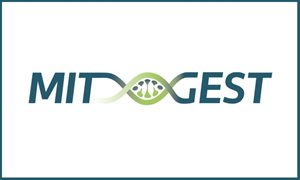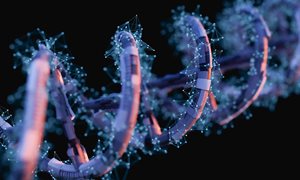
Karlien Coene, theme Metabolic Disorders, together with the group of Jos Oomens and Jonathan Martens at the Radboud FELIX laboratory, published the discovery of novel biomarkers for pyridoxine-dependent epilepsy in the Journal of Clinical Investigation, based on the unique combination of untargeted metabolomics and infrared ion spectroscopy.
Pyridoxine-dependent epilepsy (PDE-ALDH7A1), also known as antiquitin deficiency, is an inborn error of lysine metabolism that presents with severe epilepsy in newborns. The biochemical result of this genetic condition is inactivation of vitamin B6, an important co-factor for many enzymatic processes in the human body. Vitamin B6 supplementation resolves epilepsy in patients, and additional lysine reduction therapy ensures optimal cognitive outcome, however, only when started in the first months of life. Ideally, early diagnosis through newborn screening would allow for pre-symptomatic detection of patients and early initiation of personalized treatment, however, so far no suitable blood-based biomarkers were available for this purpose.
By joining forces between the innovative analytical methods untargeted metabolomics and infrared ion spectroscopy, the research team was able to discover a novel biomarker for PDE-ALDH7A1, 2-oxopropylpiperidine-2-carboxylic acid, in short 2-OPP. This biomarker was shown to be compatible with newborn screening workflows. Additionally, it was shown that 2-OPP accumulates in brain tissue of patients and aldh7a1 knock-out mice, and induced epilepsy-like behavior in a zebrafish model system, which may indicate that 2-OPP itself contributes to ongoing neurotoxicity in PDE-ALDH7A1. As 2-OPP formation appears to increase upon ketosis, this knowledge translates directly into clinical practice, emphasizing the importance of avoiding catabolism in PDE-ALDH7A1 patients.
Related news items

Hans Spelbrink is beneficiary of the MITGEST Doctoral Network which receives 2.6 million euros funding (PhD positions available)
27 September 2022EU has granted the new Doctoral Network “MITGEST” (Quality Control of the Mitochondrial Gene Expression System in Health and Disease), of which Radboudumc is one of the partners, with 2.6 million euros of funding under the Marie Sklodowska-Curie Actions.
go to page
Towards a better understanding of Leigh Syndrome pathology and intervention published in Brain
8 December 2021 Melissa van de Wal and colleagues recently published a comprehensive review in the journal Brain on how Ndufs4 knockout mouse models have been used to unravel the pathomechanism of Leigh Syndrome. go to page
New genetic defect links cell biology and protein glycosylation
10 November 2021 Peter Linders, Dirk Lefeber and Geert van den Bogaart together with international colleagues have recently reported on novel cell biological insights, by identifying a genetic disorder in syntaxin-5 which allowed to unravel a new mechanism regulating intracellular transportation. go to page
RIMLS awards call for nominations
19 October 2021 RIMLS awards several prizes to stimulate and honor our (young) researchers. Upcoming awards are Supervisor of the Year, Best Master Thesis, Best Publication, Best Image and more. Send your nominations now before 24 November 2021. go to page
Systematic analysis of short tandem repeats in 38,095 exomes provides an additional diagnostic yield
22 September 2021 Christian Gilissen and colleagues published in Genetics in Medicine about their work guiding the application of short tandem repeat analysis in clinical exome sequencing. go to page
